What are the expected trends in cloud computing in 2025 across innovation, adoption strategies, and emerging skills requirement, that regional CIOs and IT administrators need to know. Top executives from Alteryx, Bentley Systems, Cloudera, Globant, ManageEngine, Tenable, Zoho, seek to provide these answers. Don’t miss our four key takeaway summaries.
A recent IBM survey revealed that 65% of UAE IT leaders accelerated AI implementation in the past two years, highlighting the need for CIOs in 2025 to prioritise a unified and agile cloud strategy integrating SaaS, IaaS, and PaaS to drive innovation and business success. CIOs need to start by aligning cloud adoption with business objectives, leveraging SaaS for scalable applications, IaaS for flexible infrastructure, and PaaS for accelerated development and customisation.
By 2025, cloud platforms will evolve exponentially. AI will become the neural network of cloud initiatives, intelligently managing costs and resources while anticipating load and performance requirements. Integrating AI-enabled edge devices with cloud systems will optimise response times and deliver real-time analytics into user preferences.
“Driven by the need for increased agility and scalability, cloud-native architectures will become the default for businesses in 2025. With the emphasis on intelligent decision-making in businesses across various sectors, cloud-native analytics will dominate, with companies increasingly adopting multi-cloud strategies to avoid vendor lock-in,” says Karl Crowther, VP of MEA, Alteryx.
“In 2025, cloud platforms are set to undergo major advancements. AI and machine learning will automate the management and optimisation of cloud resources, enhancing efficiency. The rise of serverless computing will offer businesses scalable solutions at lower costs. Edge computing will minimise latency by processing data closer to users, enabling faster real-time responses,” says Ram Vaidyanathan, Chief IT Security Evangelist, ManageEngine.
Cloud platforms will focus on hybrid and multi-cloud deployments, AI integration, and robust data management in 2025. Innovations will drive energy-efficient infrastructures, cost-effective AI solutions, and stronger data governance. Hybrid cloud models will gain traction for flexibility, with machine learning tools enhancing data insights.
In 2025, innovations in cloud platforms will continue to transform how infrastructure projects are delivered. Cloud-based technologies like digital twins continue to evolve to offer better quality real-time data integration and AI-powered insights, improving decision-making and sustainability efforts.
“Cloud sprawl has become a fact of life for most organisations. While having a cloud security platform is critical, its power is exponentially amplified when treated as part of a comprehensive exposure management approach,” says Maher Jadallah, Vice President, Middle East and North Africa, Tenable.
“Quantum computing will start to be incorporated into mainstream cloud workflows, handling specialised workloads. Additionally, hybrid and multi-cloud environments will become the standard, driven by compliance, data sovereignty, and specialised needs,” says Federico Pienovi, Chief Business Officer and CEO for New Markets, Globant.


Where is cloud innovation heading?
Multi-cloud and hybrid-cloud models will gain traction, providing businesses with more flexibility in their infrastructure. Furthermore, quantum computing will begin shaping cloud technologies, allowing for quicker processing of complex data. These innovations will make cloud services more efficient, affordable, and accessible for businesses.
“The rise of secure, scalable platforms for predictive analytics will enable faster, more accurate decision-making. This highlights a future where cloud technology accelerates digital transformation while prioritising sustainability and security,” says Ahmad Shakora, Group Vice President of Emerging Markets, Cloudera.
Digital twin platforms such as Bentley’s iTwin, are cloud-native and open by design, providing users an ability to share data, files, and insights across a common platform.
“As an open, interoperable platform, users can, in real-time, integrate disparate engineering and operational data to support multi-disciplinary engineering teams in achieving greater efficiency and more informed and integrated planning throughout the lifecycle of infrastructure assets,” says Nathan Marsh, Senior Vice President, Regional Executive EMEA, Bentley Systems.
According to Saran B Paramasivam, Regional Director MEA, Zoho, “By 2025, cloud platforms will evolve to become more personalised and industry-focused. We will see hyper-personalised cloud solutions where AI and real-time data adjust resources, security, and performance to meet the specific needs of each business.”
“Alongside this, industry-specific cloud platforms will gain traction, offering tailored tools and workflows for sectors like healthcare, finance, retail, and manufacturing,” adds Paramasivam.
For example, healthcare clouds will prioritise secure patient data management, while retail platforms will leverage AI to enhance customer experiences and optimise inventory. These innovations will make cloud adoption more efficient and relevant to the unique demands of different industries.
Innovations taking place across cloud platforms include unified, data-driven visibility across infrastructure, multi-cloud environments, and applications that will enable security teams to achieve precise risk assessment and prioritisation.
“Uniting these disparate tools and disjointed data in one platform affords security teams a full-spectrum view of their attack surface, enabling them to expose and prioritise what matters most and act decisively to mitigate risk,” points out Tenable’s Jadallah.
“Analytics platforms will provide enhanced interoperability and portability across clouds, along with AI, ML workload management. Users will demand hyperscale-neutral capabilities that can be easily integrated and allow access to major cloud providers like AWS, GCP, and Azure,” indicates Alteryx’s Crowther.



Successful technology strategies
A well-aligned cloud strategy will empower businesses to stay competitive, adapt quickly to market changes, and deliver more personalised, data-driven experiences to customers, ultimately supporting long-term growth and success.
“Building a cloud strategy for 2025 requires a balanced approach across SaaS, IaaS, and PaaS. Key considerations include strategic SaaS procurement, embracing multi-cloud environments, integrating AI for efficiency, and strengthening data management with robust security and compliance practices,” adds Cloudera’s Shakora.
Adds ManageEngine’s Vaidyanathan, “CIOs should build a cloud strategy that leverages SaaS, PaaS, and IaaS based on business needs. SaaS should be used for scalable, user-facing applications, while PaaS helps developers create custom applications with reduced infrastructure management. IaaS is ideal for businesses requiring customised infrastructure or large-scale data storage,”
“A hybrid cloud approach, ensuring integration, security, and compliance, will be crucial. CIOs must focus on cost-efficiency, flexibility, and scalability, while continuously improving and optimising cloud services to support business growth and meet evolving technological demands,” continues Vaidyanathan.
CIOs should develop a cloud strategy that balances flexibility, security and integration by leveraging Open SaaS tools for collaboration and project management, alongside PaaS for custom application development.
“Infrastructure-focused solutions, like those offered by Bentley, can provide scalability and interoperability to handle complex workflows. Ensuring secure and efficient data storage and processing through IaaS will also be key to optimising infrastructure projects and enabling seamless collaboration across teams,” says Bentley Systems’ Marsh.
Says Zoho’s Paramasivam, “CIOs should prioritise cloud platforms that incorporate AI and automation to enhance efficiency, innovation, and agility across the enterprise. By strategically integrating SaaS, IaaS, and PaaS solutions tailored to specific business domains, they can address unique operational needs and improve overall performance. This approach not only drives revenue growth but also enhances profit margins by streamlining processes and enabling faster decision-making.”
Cybersecurity remains another top priority, along with fostering collaborative transformation across departments, while proactive problem management and investing in talent are crucial to ensure successful execution. By addressing these areas, CIOs can create a cloud strategy that drives organisational growth and innovation across the evolving digital landscape.
“Siloed security products create blind spots where attackers thrive, leaving critical gaps across the attack surface. CIOs’ cloud strategy needs to encompass enhanced risk prioritisation to close these gaps,” says Tenable’s Jadallah.
Cloud native application protection platform, CNAPP solutions replace a patchwork of siloed products that provide only partial coverage, often cause excessive alerts, and fail to expose complex risks.
By adopting a CNAPP approach CIOs can unify security and compliance technologies to gain contextual visibility into their cloud-native apps and infrastructure, and overall cloud security posture. CNAPPs allow CIOs to monitor the health of their cloud environment as a whole rather than individually.
“CIOs should position AI as a core component of their cloud strategy, leveraging its capabilities to anticipate and meet consumer needs. They should consider AI a first-class citizen that can amplify rich capabilities,” says Globant’s Pienovi.
To unlock AI-driven potential, service platforms must focus on talent optimisation and automated workflows to maximise the new level of insight and action in real-time. Hybrid cloud platforms will require sophisticated cost management, with a shift towards AI-augmented FinOps. Furthermore, DevSecOps must evolve to address the dynamic demands of intelligent service platforms.
As AI usage surges, cloud usage will inevitably rise, requiring organisations to reconsider their reliance on foundational LLMs from traditional cloud providers. This may lead to diversification into additional providers, open-source models, or partnerships.
“Embrace a data-driven approach with governed AI and analytics to optimise resource allocation and performance. A hybrid or multi-cloud strategy can further enhance resilience and adaptability to evolving market demands,” advises Alteryx’s Crowther.


Blend of skill sets
In 2025, managing hybrid and multi-cloud environments will require skills in cloud cost optimisation, balancing spending with performance using flexible pricing models. Expertise in cloud governance and security is essential to ensure compliance, protect data, and manage access across platforms. “Automation skills are critical for deploying and managing services efficiently, reducing manual efforts,” says ManageEngine’s Vaidyanathan.
Additionally, IT professionals need expertise in cloud architecture design for integrating public and private clouds, and data management for seamless data governance and analytics. “Cross-functional collaboration, along with strong vendor management and risk mitigation, is key for successful cloud strategy execution,” continues Vaidyanathan.
“Enterprise skill sets must focus on data security, governance, and traceability to effectively manage hybrid and multi-cloud environments. Proficiency in emerging technologies such as Kubernetes and containers, alongside experience in separating computing and storage, is essential for flexibility. Skills in managing data flows, machine learning, analytics, and data engineering are important while ensuring robust security and compliance measures, says Cloudera’s Shakora.
IT professionals should also have the ability to utilise both public and on-premises cloud solutions seamlessly, using platforms for improved data management and enabling self-service access while maintaining secure, well-governed systems.
Says Bentley Systems’ Marsh, “Successfully managing hybrid and multi-cloud environments in infrastructure requires familiarity with digital twin platforms and tools that enable streamlined collaboration and data integration. CIOs should prioritise expertise in cloud architecture, API management, and cybersecurity to protect critical project data assets and information.”
Incorporating AI-driven solutions can help automate repetitive tasks and improve resource allocation, ensuring teams can adapt quickly to new project demands, and reduce project costs.
Managing hybrid and multi-cloud environments in 2025 will require enterprise skill sets focused on automation and AI-driven operations, AiOps to improve operational efficiency. Teams must be proficient in using and creating the right tools for automating cloud management, resource allocation, and performance monitoring.
Additionally, strong knowledge in recovery, resilience, and backup strategies will be essential to ensure data security and business continuity across diverse cloud platforms. “These skills will enable organisations to maintain a seamless, secure, and highly efficient cloud infrastructure, reducing complexity while enhancing scalability and reliability in hybrid and multi-cloud environments,” says Zoho’s Paramasivam.
According to Globant’s Pienovi, “Managing hybrid and multi-cloud environments will require advanced business-process observability, ensuring platforms are understood in business outcomes. Enterprises will need to architect intelligent cost management, as hybrid platforms often conceal operational expenses.”
Zero Trust architecture expertise is crucial, viewing cybersecurity as an enabler rather than a barrier. Organisations must also understand how to leverage AI-based tools to manage complex, distributed technical challenges across cloud ecosystems.
In 2025, data roles will evolve with the next generation of data workers. Previously, data careers required deep application and coding expertise alongside domain knowledge. Now, with alternative learning methods beyond schooling and AI-driven automation, more workers can use tools without mastering software or coding.
“This shift reduces reliance on traditional data scientists but raises concerns about potential blind spots, such as teams lacking the skills to address application coding issues,” says Alteryx’s Crowther.
“To drive long-term success, organisations must empower untapped data talent to reach its full potential. Investing in employee upskilling and leveraging low and no-code analytics tools like Alteryx can democratise access to data insights, enabling every department to unlock valuable opportunities,” sums up Crowther.

Top cloud computing trends
- CIOs need to start by aligning cloud adoption with business objectives.
- Cloud platforms will evolve exponentially and AI will become the neural network of cloud initiatives.
- Driven by the need for increased agility and scalability, cloud-native architectures will become default for businesses.
- Cloud-native analytics will dominate, with companies adopting multi-cloud strategies to avoid vendor lock-in.
- AI and machine learning will automate management of cloud resources, enhancing efficiency.
- The rise of serverless computing will offer businesses scalable solutions at lower costs.
- Edge computing will minimise latency by processing data closer to users.
- Cloud sprawl has become a fact of life for most organisations.
- While having a cloud security platform is critical, its power is amplified when part of an exposure management approach.
- Quantum computing will begin to be incorporated into mainstream cloud workflows, handling specialised workloads.
- Hybrid and multi-cloud environments will become standard, driven by compliance, data sovereignty, and specialised needs.

Top cloud innovation drivers
- With open, interoperable platform, users can in real-time integrate disparate engineering and operational data.
- In 2025, cloud platforms will evolve to become more personalised and industry-focused.
- We will see hyper-personalised cloud solutions where AI and real-time data adjust resources, security, performance.
- Industry-specific cloud platforms will gain traction, offering tailored tools and workflows for sectors.
- Innovations include data-driven visibility across infrastructure, multi-cloud, applications to achieve risk assessment and prioritisation.
- Uniting disparate tools and disjointed data in one platform affords security teams a full view of their attack surface.
- Analytics platforms will provide enhanced interoperability and portability across clouds, along with AI, ML workload management.
- Users will demand hyperscale-neutral capabilities that allow access to major cloud providers like AWS, GCP, Azure.

Top cloud technology strategies
- Building a cloud strategy for 2025 requires a balanced approach across SaaS, IaaS, PaaS.
- Key considerations include SaaS procurement, embracing multi-cloud, integrating AI, data management with security and compliance practices.
- CIOs should develop a cloud strategy that leverages Open SaaS tools for collaboration and project management, alongside PaaS for custom application development.
- CIOs must focus on cost-efficiency, flexibility, scalability, while improving cloud services to support business growth.
- Ensuring secure and efficient data storage and processing through IaaS will be key to optimising infrastructure projects.
- Cloud native application protection platform solutions replace a patchwork of siloed products that provide only partial coverage.
- By adopting a CNAPP approach CIOs can unify security and compliance technologies to gain contextual visibility into their cloud.
- CIOs should position AI as a core component of their cloud strategy, leveraging its capabilities to anticipate and meet consumer needs.
- Consider AI a first-class citizen that can amplify rich capabilities.
- Service platforms must focus on talent optimisation and automated workflows to maximise the new level of insight in real-time.
- Hybrid cloud platforms will require sophisticated cost management, with a shift towards AI-augmented FinOps.
- DevSecOps must evolve to address the dynamic demands of intelligent service platforms.
- As AI usage surges, cloud usage will rise, requiring organisations to reconsider foundational LLMs from traditional cloud providers.
- Embrace a data-driven approach with governed AI and analytics to optimise resource allocation and performance.
- A hybrid or multi-cloud strategy can enhance resilience and adaptability to meet market demands.

Top cloud training and skills requirement
- Managing hybrid and multi-cloud will require skills in cloud cost optimisation, balancing spending with performance, flexible pricing models.
- Expertise in cloud governance and security is essential to ensure compliance, protect data, and manage access across platforms.
- Enterprise skill sets must focus on data security, governance, and traceability to effectively manage hybrid and multi-cloud environments.
- Proficiency in emerging technologies such as Kubernetes and containers, alongside experience in separating computing and storage, is essential.
- Skills in managing data flows, machine learning, analytics, data engineering are important while ensuring security and compliance.
- CIOs should prioritise expertise in cloud architecture, API management, cybersecurity to protect critical project data assets and information.
- Managing hybrid and multi-cloud will require skill sets focused on automation and AI-driven operations to improve operational efficiency.
- Teams must be proficient in using the right tools for automating cloud management, resource allocation, and performance monitoring.
- Managing hybrid and multi-cloud will require advanced business-process observability, ensuring platforms are understood in business outcomes.
- Enterprises will need to architect intelligent cost management, as hybrid platforms often conceal operational expenses.




